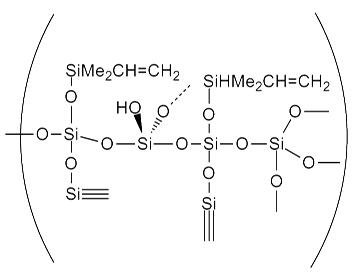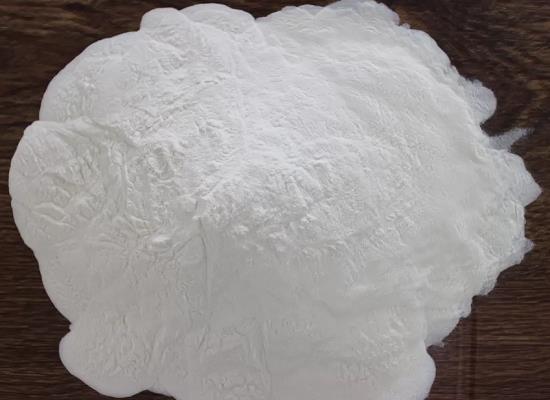Applications of Vinyl Q resin
Vinyl Q resins are clear reinforcing additives for addition cure elastomers. The melting point is < -60 °C. The boiling point is 143 °C. The density is 1.05 g/cm3.The refractive index is 1.405. The product form is mixture. The physical state is liquid. Vinyl Q resin can be used as chemical intermediate. For research and industrial use only. Use only in well ventilated areas. Avoid all eye and skin contact and do not breathe vapor and mist. Wash hands and other exposed areas with mild soap and water before eating, drinking or smoking and when leaving work. Wash contaminated clothing before reuse.
Vinyl Q resin is an activated polymeric Spezialaushärtungssiliconkautschuk with the following basic structure:

Vinyl Q resins are also clear reinforcing additives for Additionsaushärtungselastomere. Examples of vinyl Q resin dispersions that have at least 20% Q-resin are VQM-135 (DMS-V41 Base), VQM-146 (DMS-V46 Base), and VQX-221 (50% in Xylolbase). The resin mixture may be cured either at room temperature or at elevated temperatures to form a conformable elastomer. The reaction is carried out by hydrosilylation (addition cure) of vinyl functional siloxanes by hydride functional siloxanes in the presence of a catalyst such as platinum complexes or nickel complexes. Preferred platinum catalysts are SIP6830.0, SIP6832.0, and platinum-vinylsiloxane.
Unfilled silicones have extremely poor mechanical properties and will literally crumble under pressure from a fingernail. The most effective reinforcing filler is hexamethyldisilazane treated fumed silica. Alternatively, if clarity must be maintained, vinyl “Q” reinforcing resins are employed.
Vinyl resins are widely used as fabric coatings because of their combination of toughness and flexibility, and their property of not supporting combustion. Because they are nonflammable they replaced nitrocellulose lacquers for many applications on fabrics. They produce excellent coatings on metals but care must be taken in their application because, like most high polymers, they have strong cohesive forces that may overcome the adhesive forces. The entire coating may flake off as a continuous sheet if the precise application conditions have not been complied with for the various modifications.
The absence of odor, taste, and toxicity in vinyl coatings makes them suitable for the lining of beer cans. They have other applications in food containers but certain limitations exist. Namely, poor adhesion and sensitive to temperatures used in processing foods.
The vinyl copolymers can be used most efficiently in special applications such as hospital and dental equipment where durability is more important than initial cost. For laboratory equipment, epoxy resins may be preferred because the vinyls are sensitive to some solvents. The vinyl coating systems consisting of corrosion-inhibiting primer and chemical-resistant finish coats are used on new equipment for chemical plants. The metal conditioner based on zinc chromate and polyvinylbutyral are widely used over sandblasted steel as a use for vinyl systems on both industrial and marine equipment [1].
References
[1] Dominick V. Rosato, ... Matthew V. Rosato, OTHER PROCESSES, Plastic Product Material and Process Selection Handbook, 2004
);


